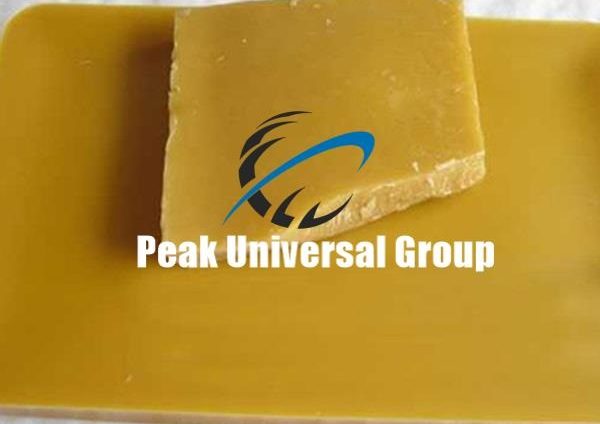
Heavy Slack Wax 5 to 8% Oil Content: Its Uses, Applications, Advantages & Disadvantages, Future Prospects, and Price Factors
Heavy slack wax with 5 to 8% oil content is a versatile by-product of the petroleum refining process. This material, characterized by its semi-solid state at room temperature, finds applications in numerous industries due to its unique properties.
This blog will explore the manufacturing process of heavy slack wax, its diverse uses and applications, the advantages and disadvantages of using it, future prospects, and the factors that influence its price.
With Peak Universal Business as a trusted supplier, we aim to provide comprehensive insights into this important industrial product.
(How Heavy Slack Wax 5 to 8 Manufacturing? Crude Oil Distillation, Solvent De-waxing, Oil Removal, Final Processing)
What is Heavy Slack Wax?
Heavy slack wax is a by-product of the petroleum refining process, particularly during the production of base oils. It contains a higher oil content compared to light slack wax, typically ranging from 5 to 8%. The presence of this oil content gives the wax its characteristic softness and flexibility, making it suitable for various applications.
Chemical Composition
- Paraffin: The primary component of slack wax, giving it its waxy nature.
- Oil Content: 5 to 8%, providing lubrication and flexibility.
- Additives: May include anti-oxidants or other stabilizers depending on the intended use.
How Heavy Slack Wax 5 to 8 Manufacturing?
The production of heavy slack wax involves several stages, starting from crude oil refining to the final product. The key steps include:(Crude Oil Distillation, Solvent De-waxing, Oil Removal, Final Processing)
1. Crude Oil Distillation
The process begins with the distillation of crude oil in a refinery. Crude oil is heated in a distillation column, where it is separated into various fractions based on boiling points. The heavier fractions, which include waxes, are collected at the bottom of the distillation column.
2. Solvent De-waxing
The waxy fractions obtained from the distillation process undergo solvent de-waxing. In this stage, solvents such as methyl ethyl ketone (MEK) or toluene are added to the waxy feedstock. The mixture is then chilled to precipitate out the waxes. The solid wax is separated from the liquid by filtration or centrifugation.
3. Oil Removal
Oil Removal – The separated wax contains a significant amount of oil, which needs to be reduced to achieve the desired oil content. This is done through a process called deoiling, where the wax is treated with solvents and heated to remove excess oil. The resulting product is slack wax with the specified oil content, in this case, 5 to 8%.
4. Final Processing
Final Processing – The deoiled slack wax is then subjected to further processing, which may include refining and blending to achieve the desired properties. This final product is heavy slack wax with 5 to 8% oil content, ready for various industrial applications.
Uses and Applications of Heavy Slack Wax
Heavy slack wax with 5 to 8% oil content is a versatile material with a wide range of applications across different industries. Some of the primary uses include:
1. Candle Manufacturing
Heavy slack wax is a key ingredient in the production of candles. Its semi-solid nature and slow-burning properties make it ideal for candle making. The oil content provides a smooth texture and helps in the even burning of candles.
2. Rubber and Tire Industry
In the rubber and tire industry, slack wax is used as a processing aid and lubricant. It helps in the extrusion and molding of rubber products, reducing friction and improving the quality of the final product.
3. Particle Board and Medium Density Fiberboard (MDF) Manufacturing
Slack wax is used as a binder in the production of particle board and MDF. It helps in binding the wood particles together, providing strength and stability to the boards.
4. Waterproofing
Heavy slack wax is used in the formulation of waterproofing compounds for construction and industrial applications. It provides a protective barrier against moisture, preventing water damage and enhancing the durability of structures.
5. Corrugated Box Manufacturing
In the packaging industry, slack wax is used as a coating for corrugated boxes. It provides a moisture-resistant barrier, protecting the contents of the boxes from external elements.
6. Industrial Lubricants
Heavy slack wax is used as a base material in the formulation of industrial lubricants. Its lubricating properties help in reducing friction and wear in machinery and equipment, extending their lifespan.
Advantages of Heavy Slack Wax
The use of heavy slack wax with 5 to 8% oil content offers several advantages, making it a preferred choice in various industries.
1. Cost-Effective
Heavy slack wax is a cost-effective material compared to other types of waxes. Its availability as a by-product of the petroleum refining process makes it relatively inexpensive, providing economic benefits to manufacturers.
2. Versatility
The versatility of heavy slack wax allows it to be used in a wide range of applications, from candle making to industrial lubricants. Its unique properties make it suitable for diverse industrial processes.
3. Lubricating Properties
The oil content in heavy slack wax provides excellent lubricating properties, reducing friction and wear in various applications. This makes it an ideal choice for use in the rubber and tire industry, as well as in industrial lubricants.
4. Moisture Resistance
Heavy slack wax provides a protective barrier against moisture, making it ideal for use in waterproofing applications and in the coating of corrugated boxes. It helps in preventing water damage and enhancing the durability of products.
Disadvantages of Heavy Slack Wax
While heavy slack wax offers numerous advantages, there are also some disadvantages to consider.
1. Limited Purity
The presence of oil in heavy slack wax can be a disadvantage in applications that require high purity wax. The oil content may affect the performance and quality of the final product in certain applications.
2. Temperature Sensitivity
Heavy slack wax is sensitive to temperature changes. It can become too soft at high temperatures and too brittle at low temperatures, affecting its performance in some applications.
3. Odor
The presence of oil in slack wax can sometimes result in an unpleasant odor. This can be a disadvantage in applications where odor control is important, such as in candle making and packaging.
Future Prospects of Heavy Slack Wax
The future prospects of heavy slack wax are promising, with ongoing research and development focused on enhancing its properties and expanding its applications.
1. Advanced Manufacturing Processes
Advancements in manufacturing processes are expected to improve the quality and performance of heavy slack wax. Innovations in solvent de-waxing and deoiling techniques will result in higher purity wax with reduced oil content.
2. Sustainable Solutions
The demand for sustainable and eco-friendly materials is driving the development of bio-based slack wax alternatives. Research is underway to produce slack wax from renewable sources, reducing the reliance on petroleum-based products.
3. Expanded Applications
The unique properties of heavy slack wax are opening up new applications in various industries. For example, its use in the formulation of bio-degradable products and in the production of renewable energy sources is being explored.
Price Factors of Heavy Slack Wax
The price of heavy slack wax is influenced by several factors, including:
1. Crude Oil Prices
As a by-product of the petroleum refining process, the price of heavy slack wax is closely linked to crude oil prices. Fluctuations in crude oil prices can have a direct impact on the cost of slack wax.
2. Supply and Demand
The supply and demand dynamics of slack wax also play a significant role in determining its price. Increased demand from industries such as candle making and packaging can drive up prices, while oversupply can result in lower prices.
3. Production Costs
The cost of production, including refining and processing, affects the price of heavy slack wax. Advancements in manufacturing processes that reduce production costs can lead to more competitive pricing.
4. Quality and Purity
The quality and purity of heavy slack wax also influence its price. Higher purity wax with lower oil content is typically priced higher due to the additional processing required.
5. Geopolitical Factors
Geopolitical factors, such as trade policies and international relations, can impact the availability and price of heavy slack wax. Changes in trade regulations and tariffs can affect the cost and supply chain dynamics.
Peak Universal Business: Your Reliable Heavy Slack Wax Supplier
Peak Universal Business is a leading supplier of high-quality heavy slack wax, offering a wide range of products tailored to meet the specific needs of various industries. Our commitment to quality and customer satisfaction makes us the preferred choice for slack wax supply. (How Heavy Slack Wax 5 to 8 Manufacturing? Crude Oil Distillation, Solvent De-waxing, Oil Removal, Final Processing)
- Product Quality
- Premium Heavy Slack Wax: We source the highest quality heavy slack wax to ensure optimal performance in your applications.
- Consistent Supply: Our robust supply chain ensures consistent availability of heavy slack wax for your projects.
- Technical Support: Our team of experts provides technical support to help you achieve the best results with heavy slack wax.
- Customer Satisfaction
- Reliable Delivery: We ensure timely and reliable delivery of heavy slack wax to keep your projects on schedule.
- Competitive Pricing: Our competitive pricing ensures you get the best value for your investment in heavy slack wax.
- Customized Solutions: We offer customized solutions to meet the unique requirements of your applications.
Conclusion
Heavy slack wax with 5 to 8% oil content is a versatile and cost-effective material with numerous applications across different industries. Its unique properties, such as excellent lubricating properties and moisture resistance, make it an ideal choice for use in candle making, rubber and tire manufacturing, particle board production, waterproofing, corrugated box manufacturing, and industrial lubricants.
While there are some disadvantages to consider, such as limited purity and temperature sensitivity, the advantages of using heavy slack wax far outweigh the drawbacks. The future prospects of heavy slack wax are promising, with ongoing research and development focused on enhancing its properties and expanding its applications.
As a reliable supplier, Peak Universal Business is committed to providing high-quality heavy slack wax to meet the specific needs of various industries. Our commitment to quality, customer satisfaction, and competitive pricing makes us the preferred choice for slack wax supply.
How Heavy Slack Wax 5 to 8 Manufacturing? Crude Oil Distillation, Solvent De-waxing, Oil Removal, Final Processing
You can Read More about this product Here:
Properties and Uses of Heavy Slack Wax 8-12%
How Heavy Slack wax 2-5% Oil Content is manufactured?
What is the Application of Slack Wax?
Heavy Slack Wax 5 to 8% and Its uses & Application
If You have any other Query or Question you want to ask, Please don’t hesitate to Contact Us.
- 0 comment

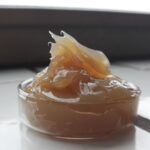
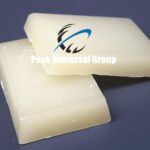
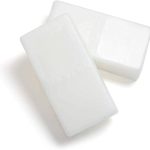
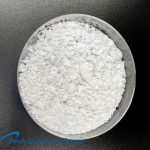
Leave a Reply